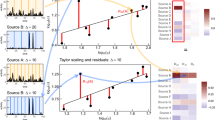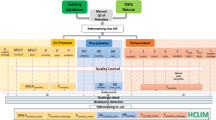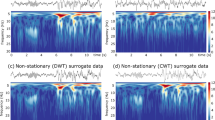Abstract
IF I am not mistaken, the first method of forecasting the summer season proposed by Mr. A. B. MacDowall in NATURE of September 16, 1909 (vol. lxxxi., p. 335), is based upon a spurious correlation. If we take a series of departures from normal of a meteorological element and tabulate the sums of consecutive groups of thirty, there will always be a relationship between these sums, although tiie original departures may be entirely independent, and hence the relationship between the sums cannot be utilised for forecasting an individual term of the original series. That such sums of independent departures are not independent may be seen in the following way. If we denote the original independent departures by d1, d2,..., and the sum ot thirty quantities beginning with dp by sp, the correlation coefficient between such quantities as sp and sp+1, as given by statistical methods, will be the mean value of a long series of products sp sp+1 divided by the product of the square roots of the mean values of s2p and of s2p+1 Now as dp, dq are independent the mean value of the product dp, dq will be zero; and it is easily seen that the correlation coefficient in question is the mean value of (d2p+1 + d2p+2 + + d2p+29) divided by the product of the square roots of the mean values of (d2p+...+a2 p+29) and of (d2p+1 + + d2p+30); if we denote the mean value of d2q by m2, this becomes 29m/30m2, or 29/30. Thus the thirty-year sums of independent annual departures will tend to vary closely together, and the dots in a diagram like that of p. 335 would tend to lie on a straight line.
Similar content being viewed by others
Article PDF
Author information
Authors and Affiliations
Rights and permissions
About this article
Cite this article
WALKER, G. An Example of Spurious Correlation. Nature 82, 279 (1910). https://doi.org/10.1038/082279a0
Issue Date:
DOI: https://doi.org/10.1038/082279a0
Comments
By submitting a comment you agree to abide by our Terms and Community Guidelines. If you find something abusive or that does not comply with our terms or guidelines please flag it as inappropriate.



